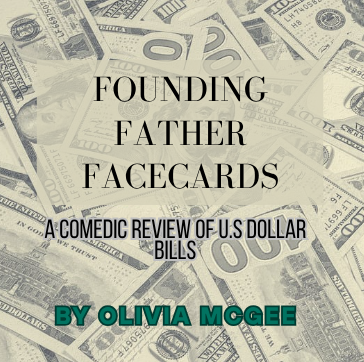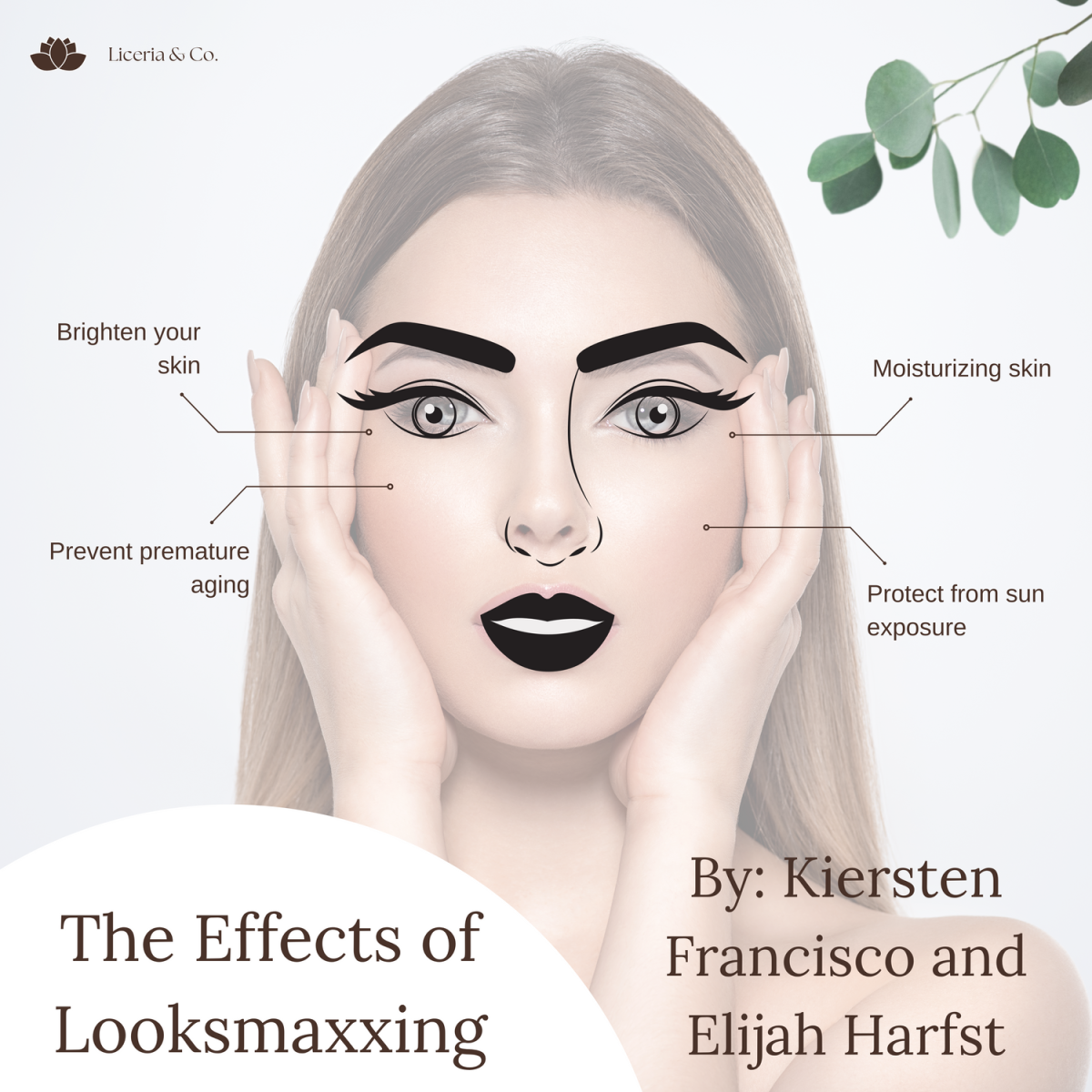Only the greatest American influential figures appear on U.S currency. The faces of past presidents and founding fathers who shaped American history are passed back and forth on coins and bills between countless people each day. Not only do I love money, but I also love judging historical figures based on their appearances, and a lot of them seem pretty unattractive.
Portraits on coins do not have as much detail as bills do, so it is far easier to decipher the facial quality of figures on paper. Because of this, I will only be looking into the details of dollar bills. I will be reviewing the portrait quality, the utility of the bill itself, how I feel about the pictured figure as a person, and most importantly, the attractiveness of each historical figure. The first four bills are the most commonly known, so I will only be numerically rating the $1, $2, $5, and $10 bills.
The following are my ratings for your entertainment:
$1 – George Washington
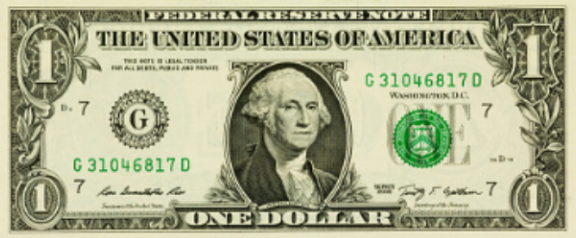
(Photo Credit: National Museum of American History)
Attractiveness: 6/10
Washington has particularly thin lips in this portrait, but looks very presidential. His wig is well-kept, but his hairline is quite receded. His nose is particularly long, but he seems like an average-looking dude for a man in his 60s.
Art quality: 10/10
After seeing other portraits of him, this particular artist did not do him a disservice. He is framed at a good angle, and there is just enough detail to show his features without making him look decrepit. This is one of the most commonly used portraits of George Washington.
Do I like George Washington?: 9/10 as a leader, 6/10 as a person
As the first ever President of the United States, Washington set an example for the rest of American history. Americans trusted him with immense power in a growing nation in order to carry out the will of the people. He was a powerful leader who allowed our nation to win the Revolutionary War. Our country would be completely different today without him. Like many other powerful men at the time, Washington owned many slaves. According to the University of Virginia, he did not take action against slavery in his presidency, and the only thing that he did to benefit slaves was freeing his own from servitude in his will after his death. While he contributed to the horrific oppression of many people until the day he died, freeing his slaves was at least a nod towards more progressive views on human rights.
Utility of the bill: 8.5/10
There is not much you can purchase for a dollar in America. However, the one-dollar bill is still important when paying precise amounts and giving change for larger bills. I have several of these bills around my house, but I don’t usually keep them in my wallet because of the rise in electronic payments. These bills are essential for vending machines that don’t accept cards.
$2 – Thomas Jefferson

(Photo Credit: National Museum of American History)
Attractiveness: 7.5/10
On the $2 bill, Jefferson looks somewhat attractive. The length and curls of his wig are not particularly attractive in my opinion, but his nose and lips look amazing in comparison to Washington’s portrait. In other, more common pictures of Jefferson, such as the piece made in 1800 by Rembrandt Peale, he looks more chiseled and refined but suffers from unfortunately thin lips.
Art quality: 4/10
This particular portrait is not commonly used to depict Thomas Jefferson today. Compared to his most common portraits, he looks very different. His face is rounder and less chiseled, making him look younger but also less powerful. On U.S currency, I think that presidents should be depicted with more confidence. The quality and detail of the art are good, but the portrait is not particularly memorable.
Do I like Thomas Jefferson? 8.5/10 as a leader, 4/10 as a person
As the writer of the Declaration of Independence, his work was vital to the creation of our nation. However, he was known by many as a hypocrite for writing words such as “all men are created equal” while going on to enslave hundreds of people and advocate for continued southern slavery. According to the Smithsonian Magazine, he also advocated firmly against slavery through his writing and ideas for emancipation, but remained unmoving on the issue as president. Judging by the standards of the time, he set foundations for important natural rights that we are still guaranteed today, such as the freedom of religion and of speech. His role in government was essential to forming a fair and independent nation, but, in my opinion, he still made a lot of questionable choices.
Utility of the bill: 7/10
Since this bill is no longer printed, it obviously does not have practical use. However, its rarity makes it one of the most interesting bills to own, and it can be sold as an artifact for more than it was created to be worth. If I owned a $2 bill, I would treasure it far more than any $1 or $5 bill, but I would never use it to make a purchase.
$5 – Abraham Lincoln
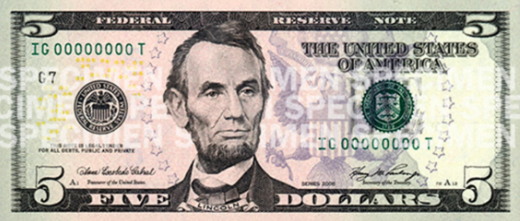
(Photo Source: NBC News)
Attractiveness: 8/10
Something about this man is indescribably somewhat attractive. He stands out without a wig and with a bit of clean facial hair. His hairline is receding, and his age is apparent in this portrait, but he looks like a bold leader. His ears are sizable, but that is not necessarily an unattractive trait. He was very skinny, but his height of 6’4 completely makes up for that.
Art quality: 9/10
I believe that this is one of the most attractive depictions of Abraham Lincoln, and the artist did a good job of making him look presidential when his facial features were not very strong. However, I would prefer if his face did not take up as much space on the bill itself, and there was more creativity and artwork around the corners.
Do I like Abraham Lincoln? 6/10 as a leader, 9/10 as a person
One of Lincoln’s most well-known accomplishments was putting an end to slavery in the United States, which was incredibly controversial at the time and proved his strong character. However, some have argued that his leadership allowed the Civil War to be far more destructive than it needed to be. Hundreds of thousands of Americans died, and it cost the nation billions of dollars. The accomplishment of emancipation caused a major and necessary shift towards justice, but according to the University of Michigan, he explicitly supported views of white supremacy and opposed racial equality. During a speech against the views of Fredrick Douglass, he specifically said, “I am not, nor ever have been in favor of bringing about in any way the social and political equality of the white and black races.” Yikes.
Utility of the bill: 8/10
The five-dollar bill is perfect for a number of purchases, but I very rarely find myself using it. Most of the purchases that I make would justify the use of a couple of fives, but I oddly love the use of even numbers for everything in my life too much to keep the odd-numbered bill in my wallet.
$10 – Alexander Hamilton
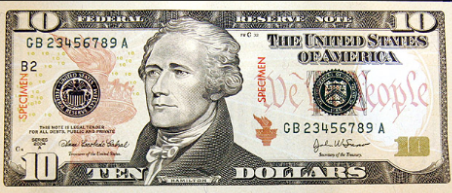
(Photo Source: Lawrence Journal World)
Attractiveness: 10/10
Hear me out. Some may argue that his forehead is too large or his lips or too thin, but I would consider him very attractive in comparison to average men of his time. His face is perfectly chiseled, his eyes make him look both kind and authoritative, and his wig suits his face. He’s on the ten-dollar bill for a reason. He’s a ten.
Art quality: 10/10
This is the most flattering portrait I’ve seen of him. I was shocked to discover that many of his other portraits make him look like a completely different (and entirely ugly) man. I’ve noticed the same trend in other portraits from the time, so it is often hard to tell what important figures in America actually looked like. The artist of this portrait did a good job of making Hamilton look influential and even presidential, despite the fact that he was never president.
Do I like Alexander Hamilton? 10/10 as a leader, 9/10 as a person
Alexander Hamilton was an incredibly intelligent and ambitious man. According to the American Library Association, he was a soldier in the Revolutionary War, a lawyer, and an economist. He wrote most of the Federalist Papers, which helped persuade the public and lawmakers to ratify the Constitution that has shaped the laws of our nation today.
Utility of the bill: 9.5/10
I love using ten-dollar bills. I don’t use cash very frequently, but when I do, I enjoy paying with this bill. I keep a couple of tens with me whenever I go out, and I enjoy looking at them more than the others.
Honorable Mentions:
$20 – Andrew Jackson
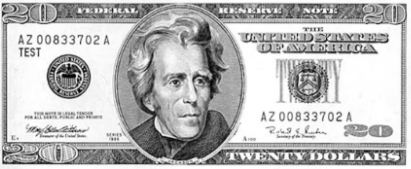
(Photo Source: U.S Department of Defense)
Jackson looks eerily similar to Hugh Grant but not as attractive. According to Britannica, he was the seventh President of the United States as well as the first president to be born in poverty. If I hadn’t done research to find his accomplishments, such as leading victories in the War of 1812 for this review, I would honestly be unable to identify his impact on our nation. I use twenty-dollar bills infrequently, and I would rather just use two ten-dollar bills, but I understand that it can be helpful in many situations.
$50 – Ulysses S. Grant
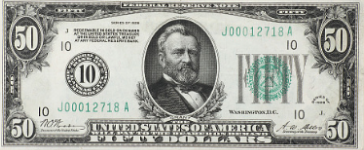
(Photo Source: National Museum of American History)
His face reminds me of a grandfather’s, so I don’t feel quite right ranking his attractiveness. He led the Union army and was the 18th U.S President, but he doesn’t stick out to me as a leader. I almost never use this bill, but when I see it in a birthday card, I jump for joy.
$100 – Benjamin Franklin
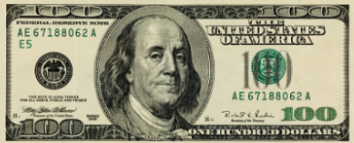
(Photo Source: National Museum of American History)
The giant bald spot in the middle of this head unsettles me. I appreciate the fact that he embraces his unique hair without a wig, but his appearance doesn’t stick out on this bill. One Hundred dollar bills are also commonly known as “Benjamins,” which I believe has a nice ring to it. As a Founding Father that played a key role in the creation of the Declaration of Independence, I think that he earned his role on a bill of high value. As I predict many others would, I feel overjoyed at the thought of receiving a $100 bill. I avoid keeping this bill with me outside of my home because the risk of theft is greater.
